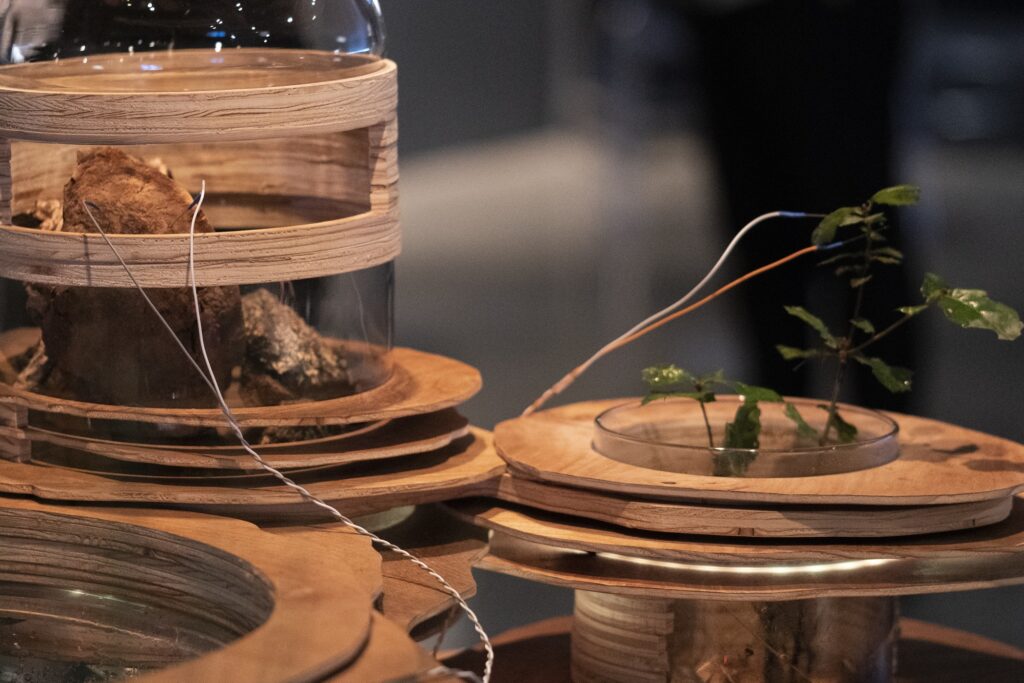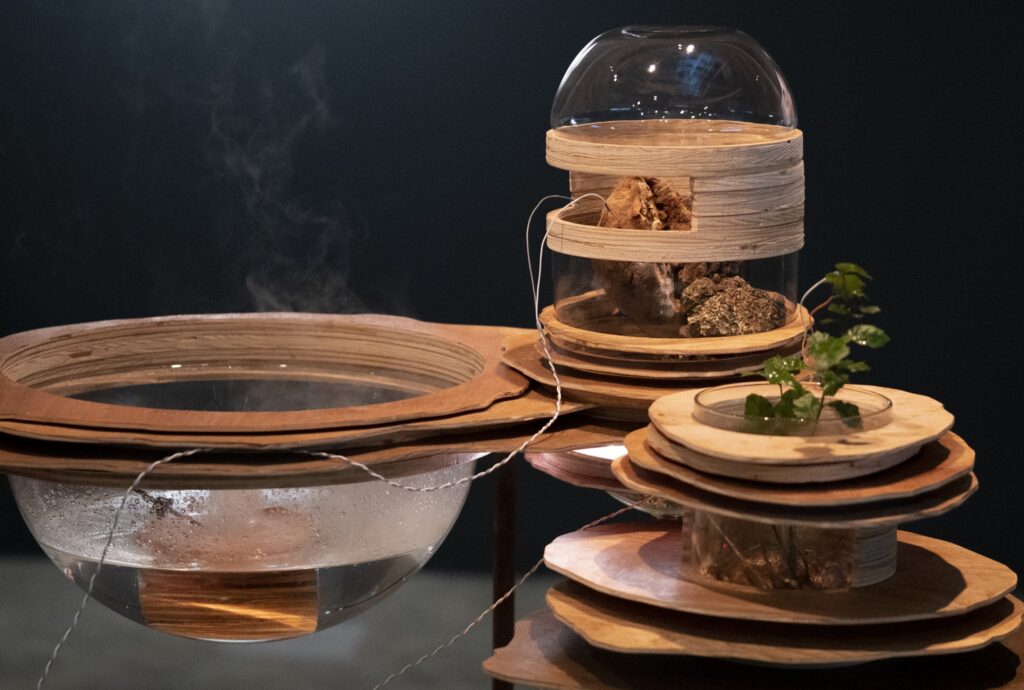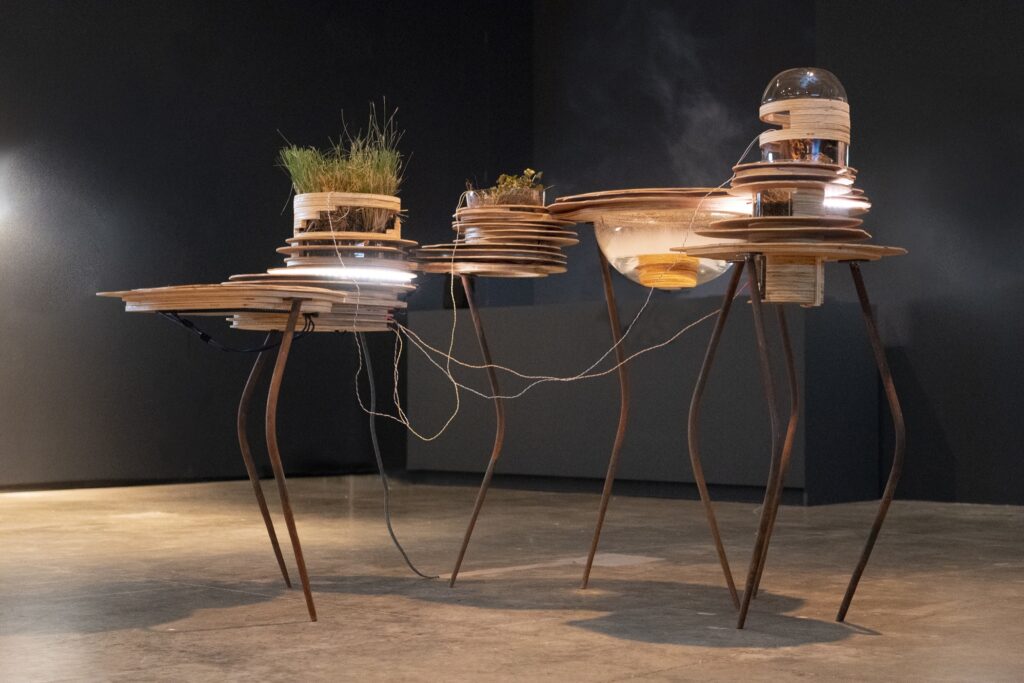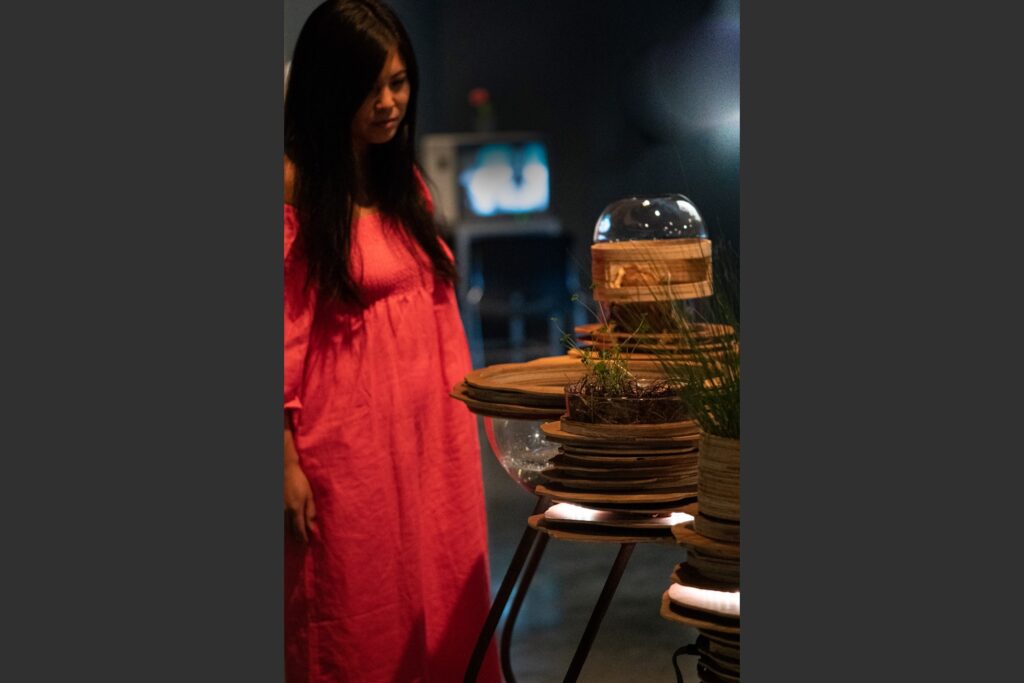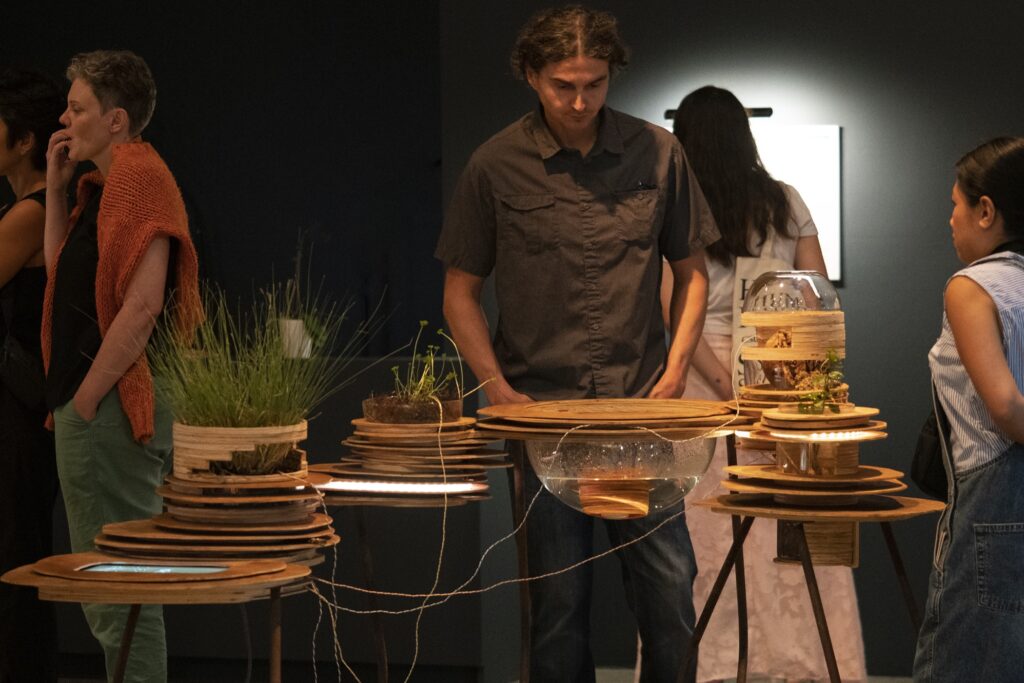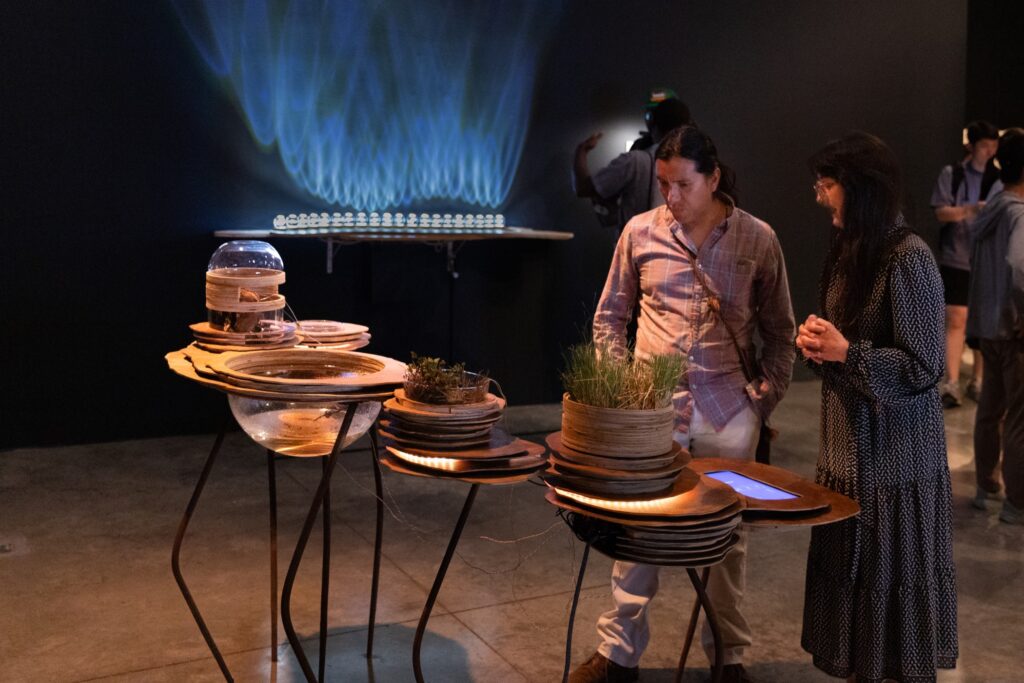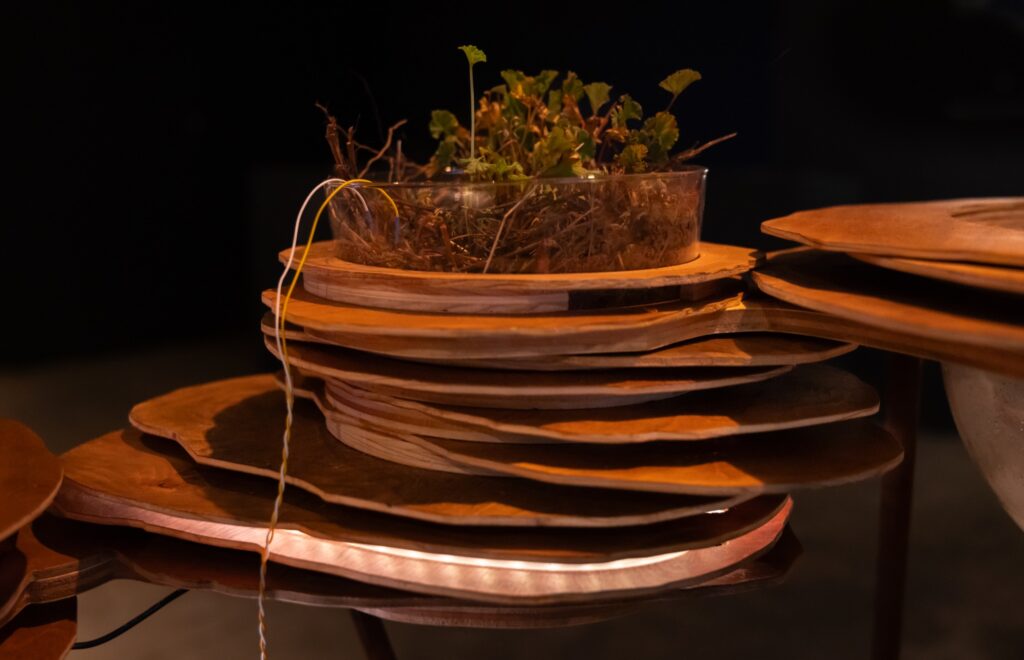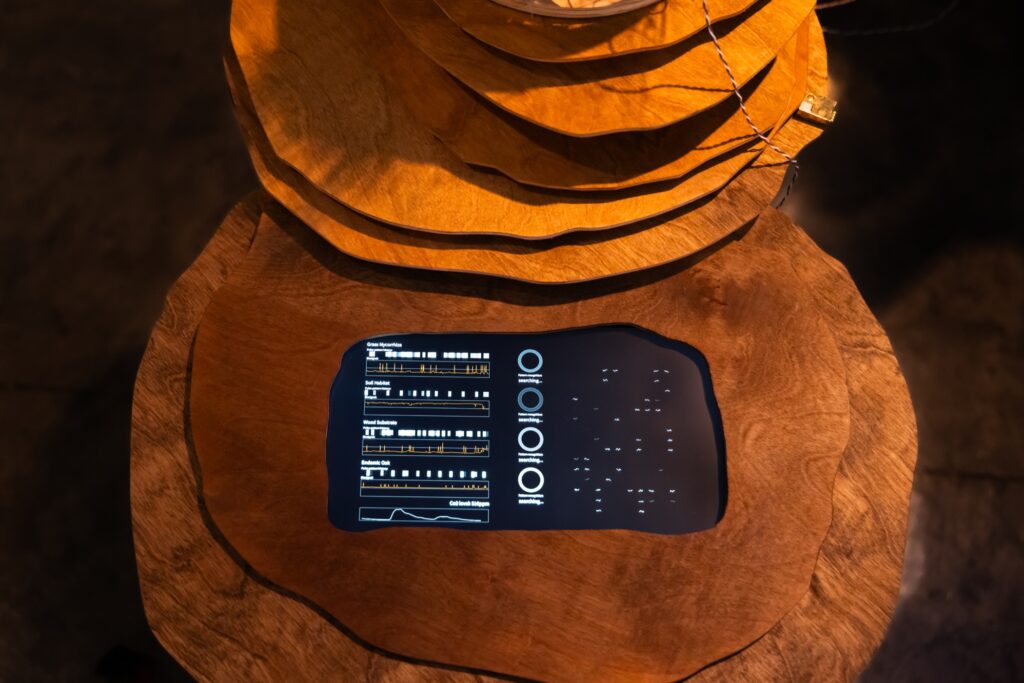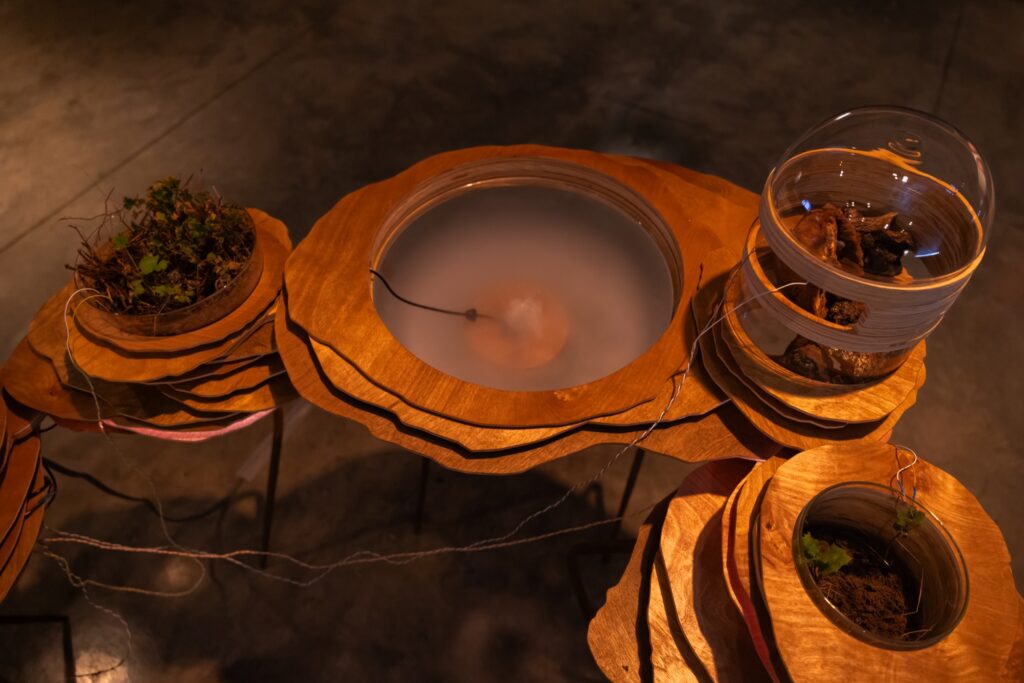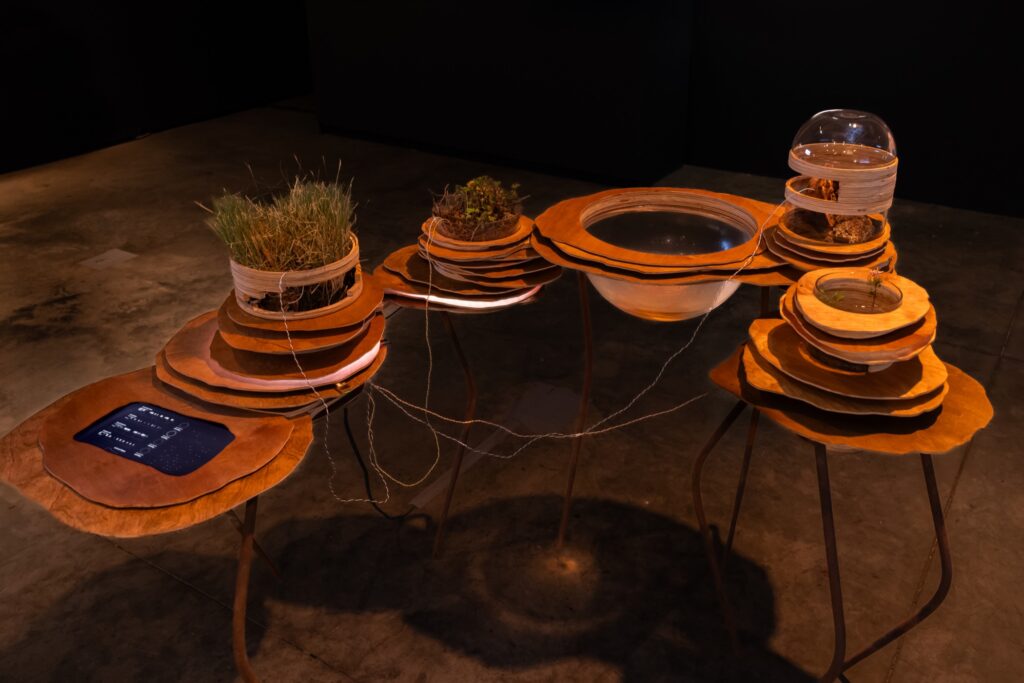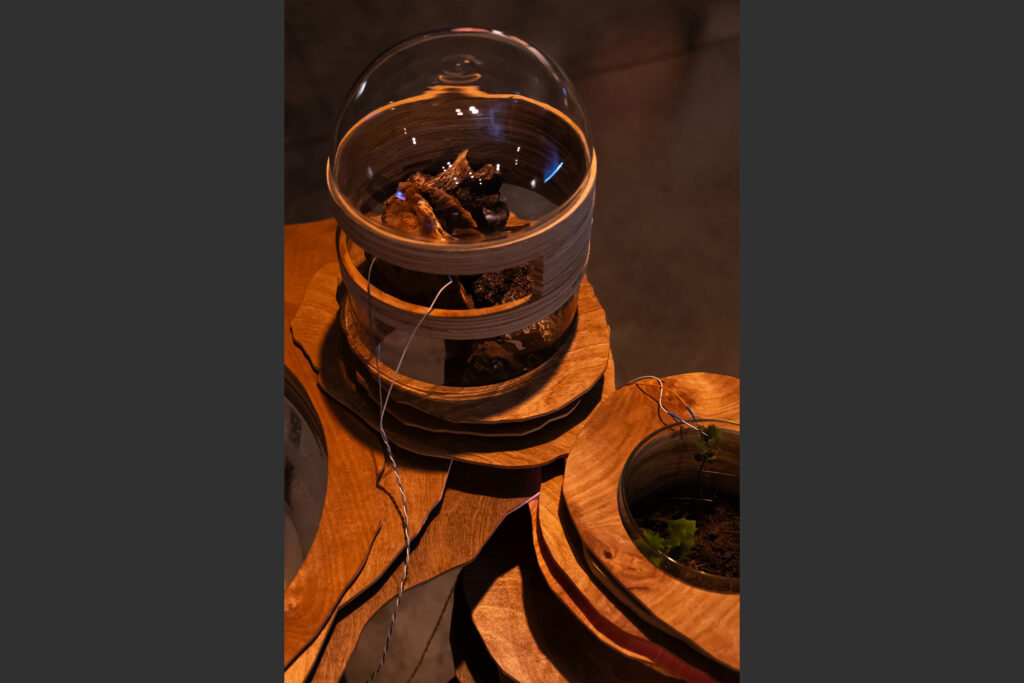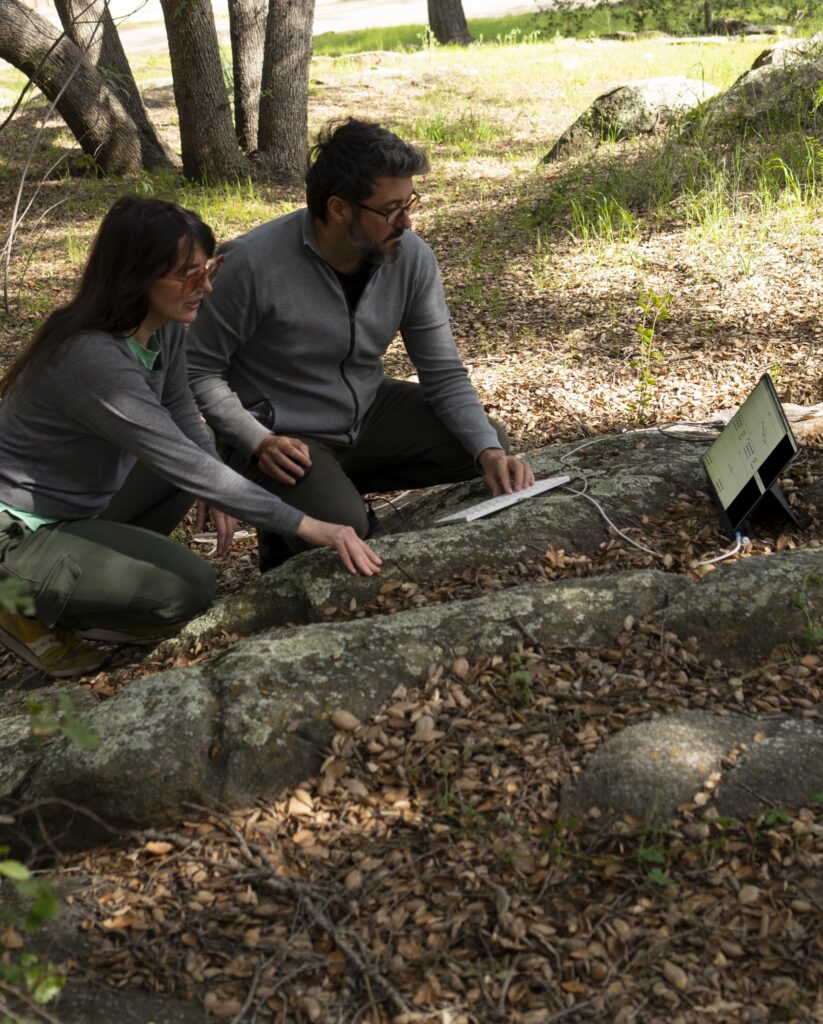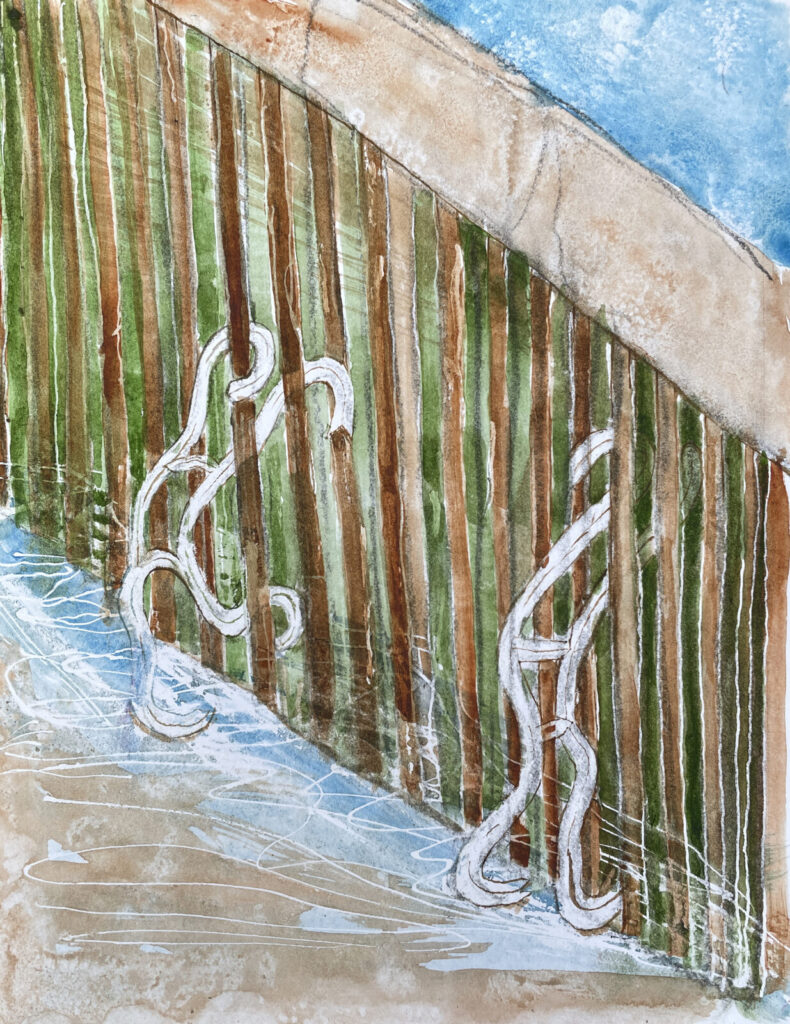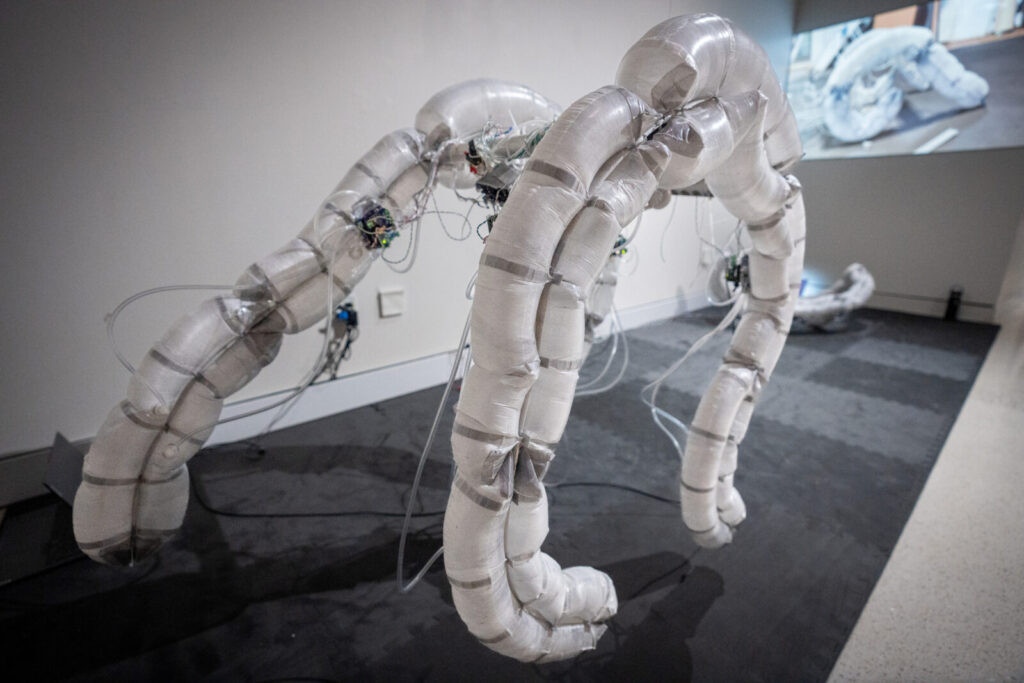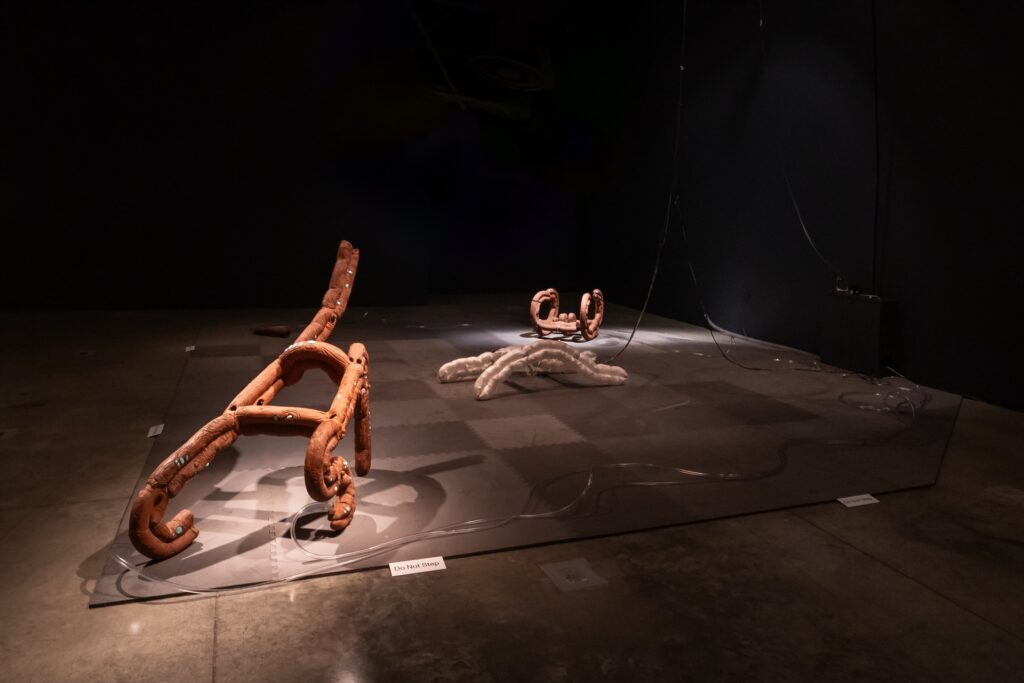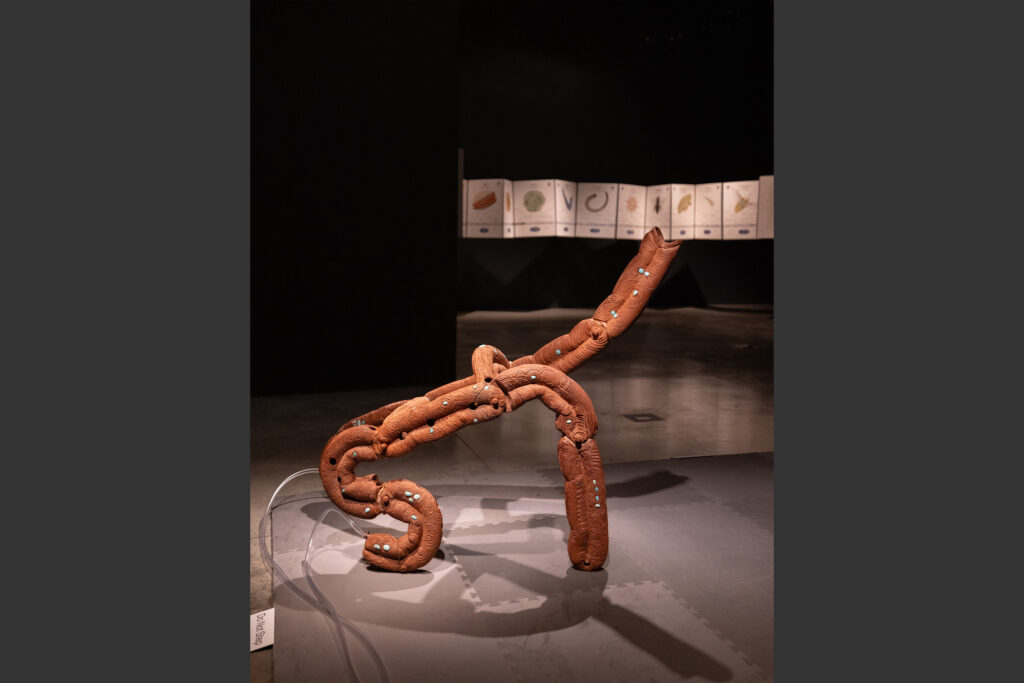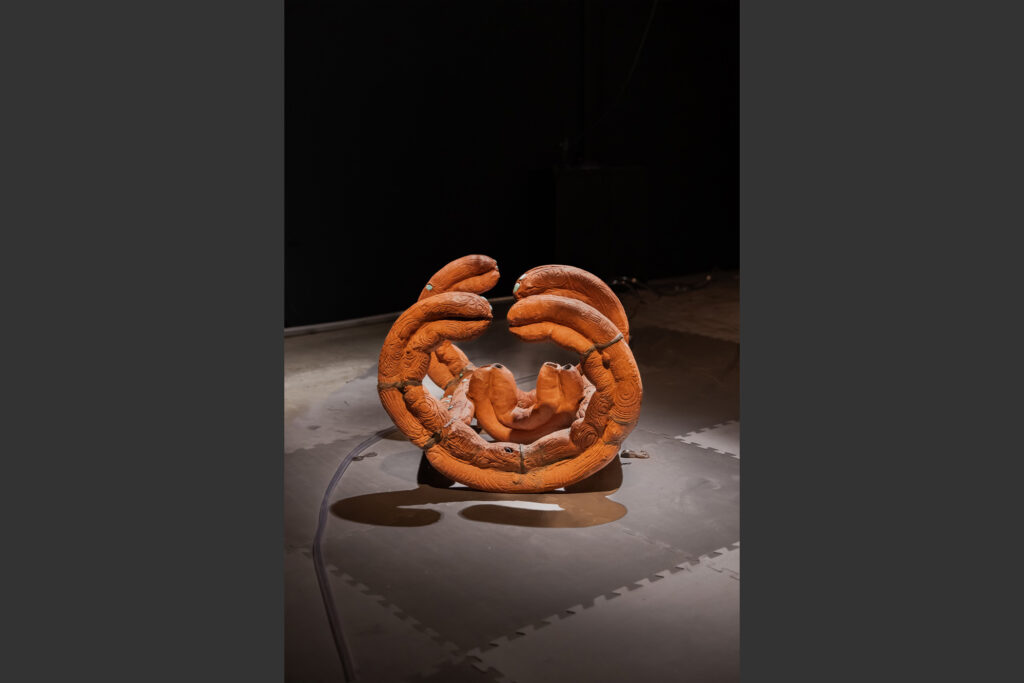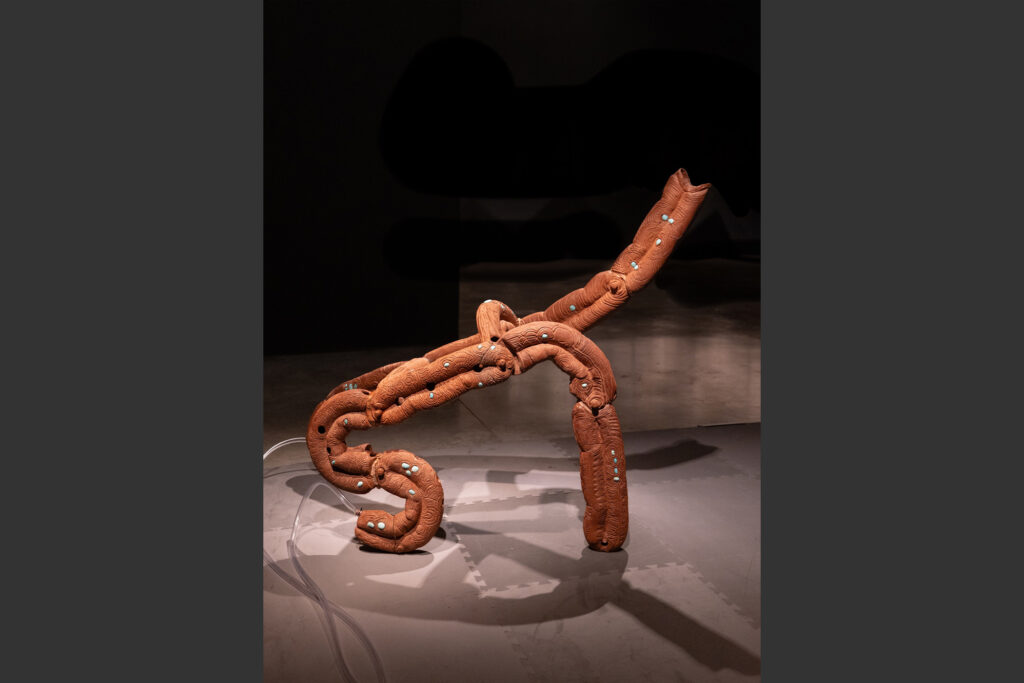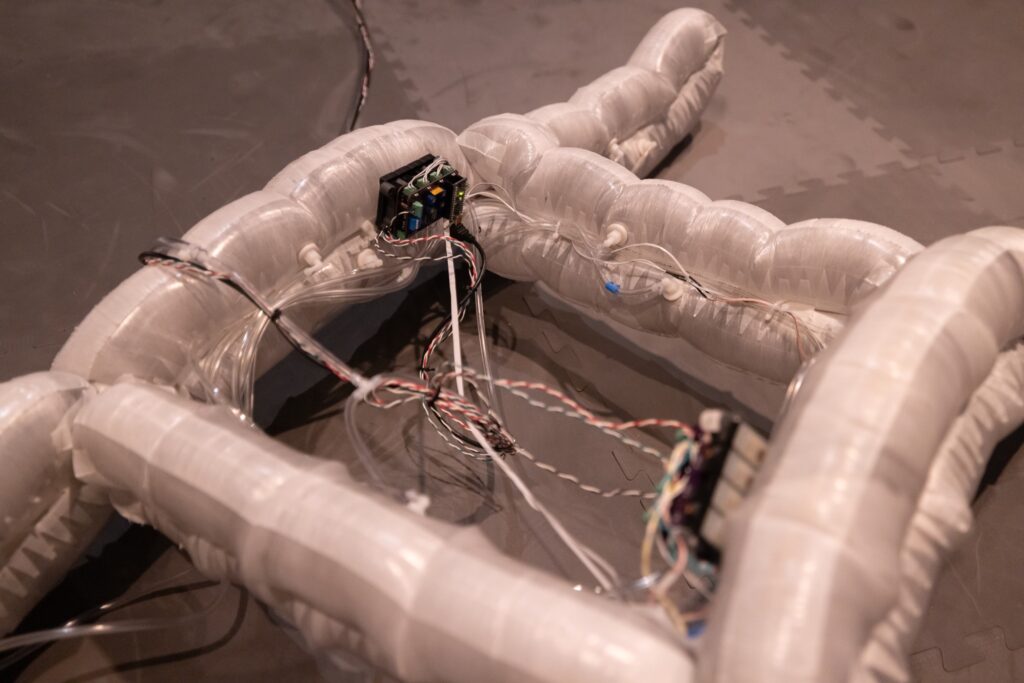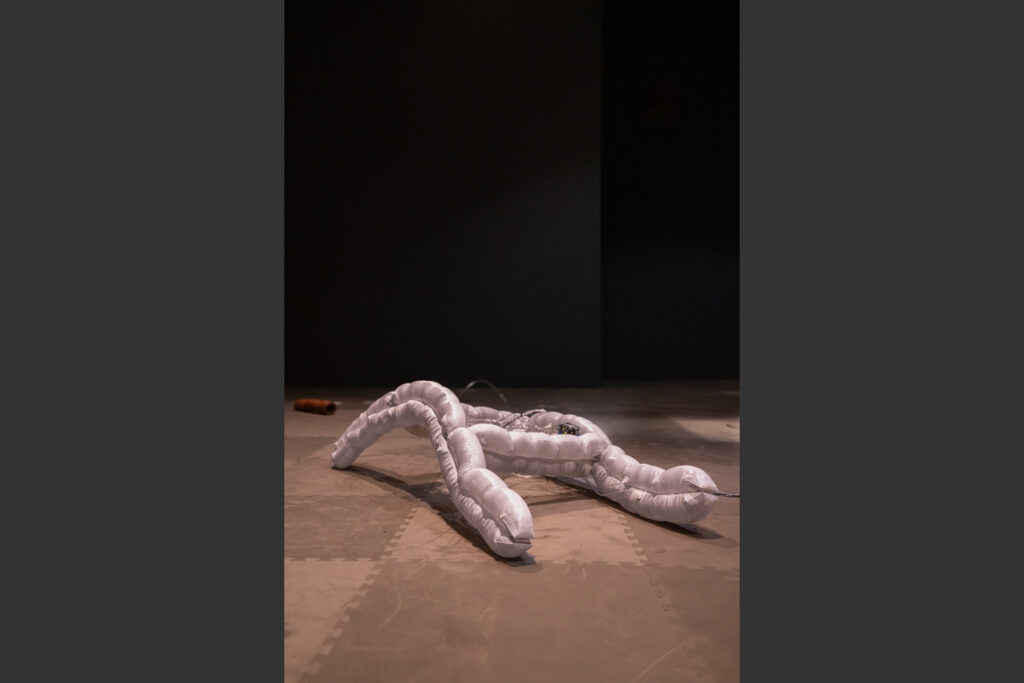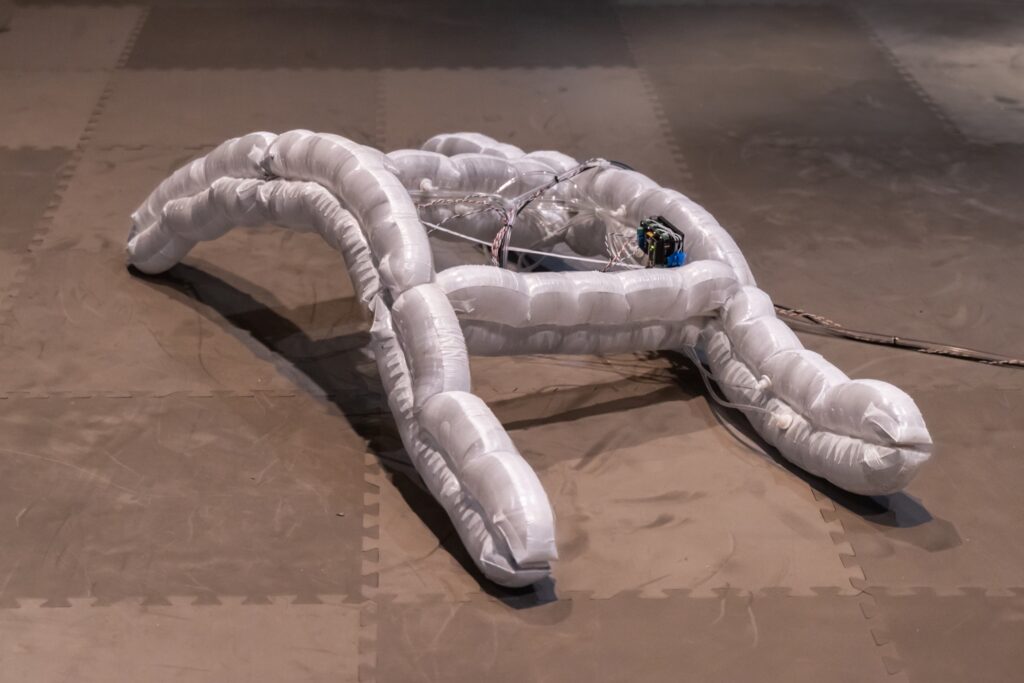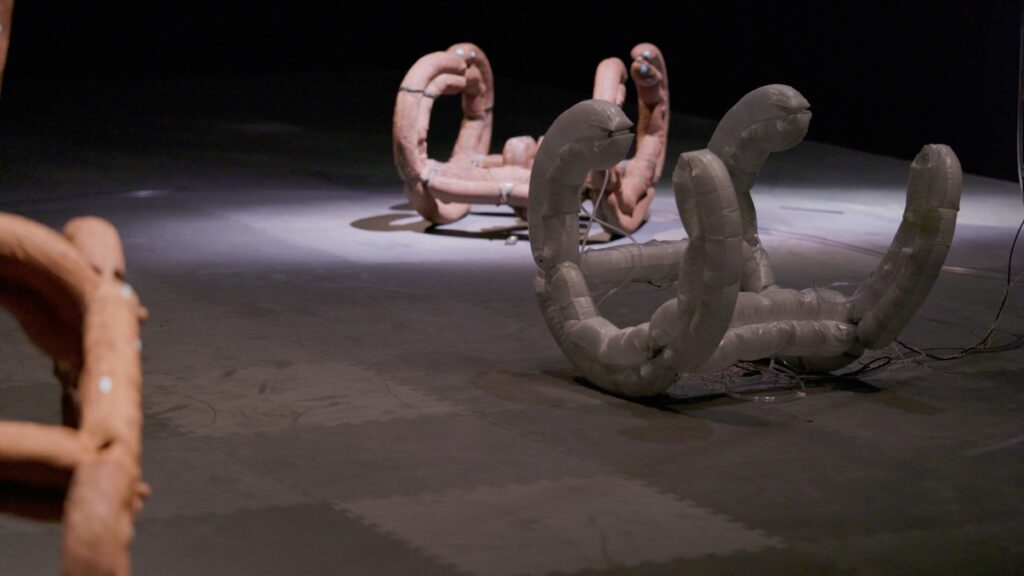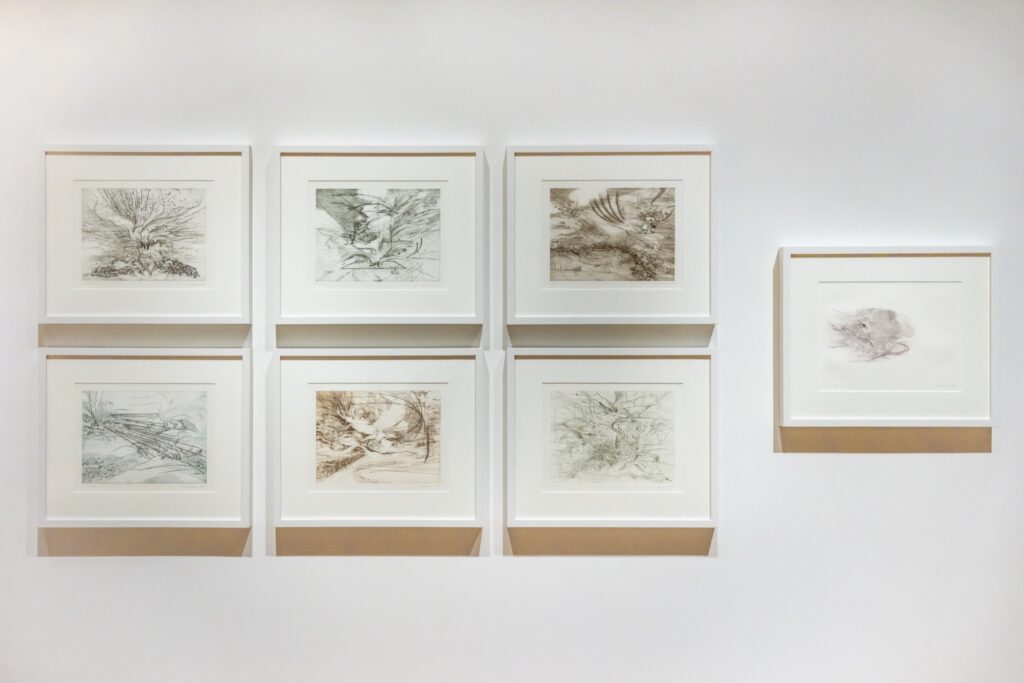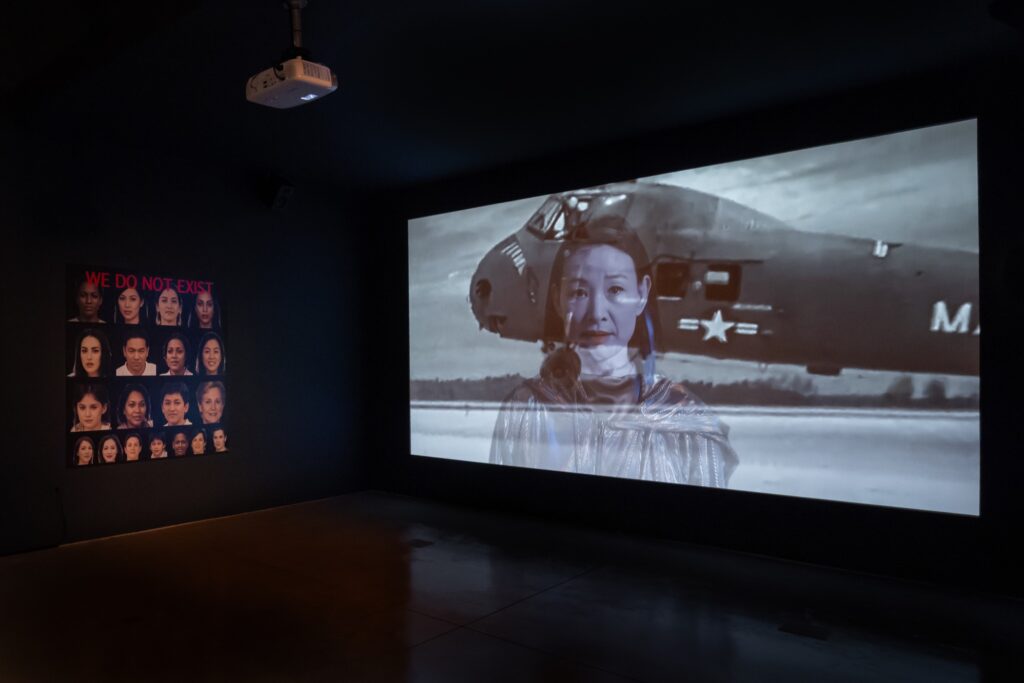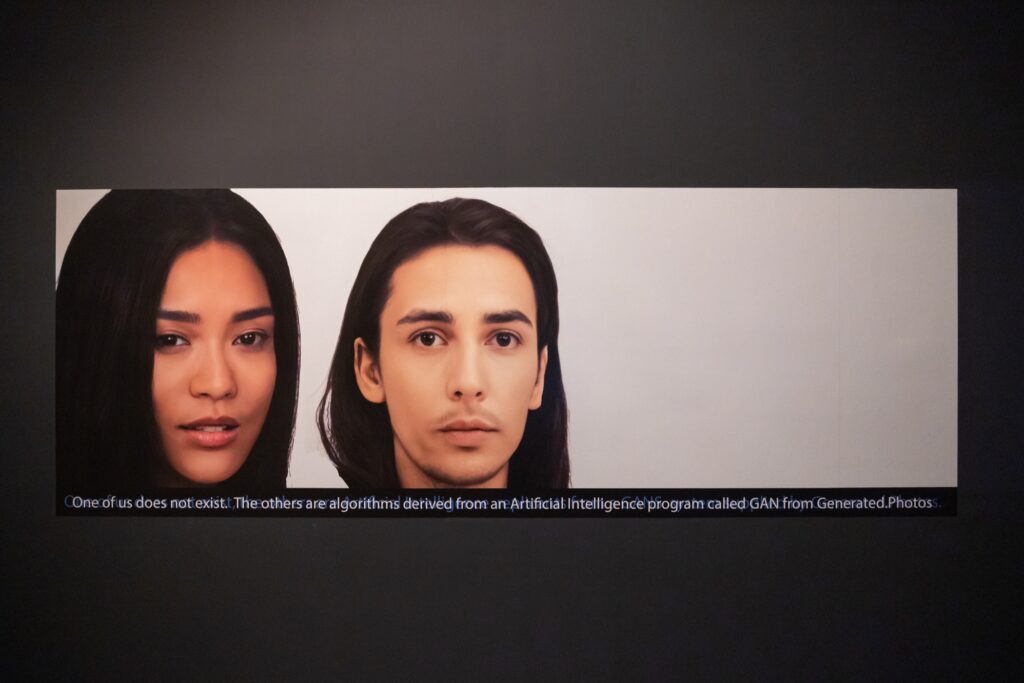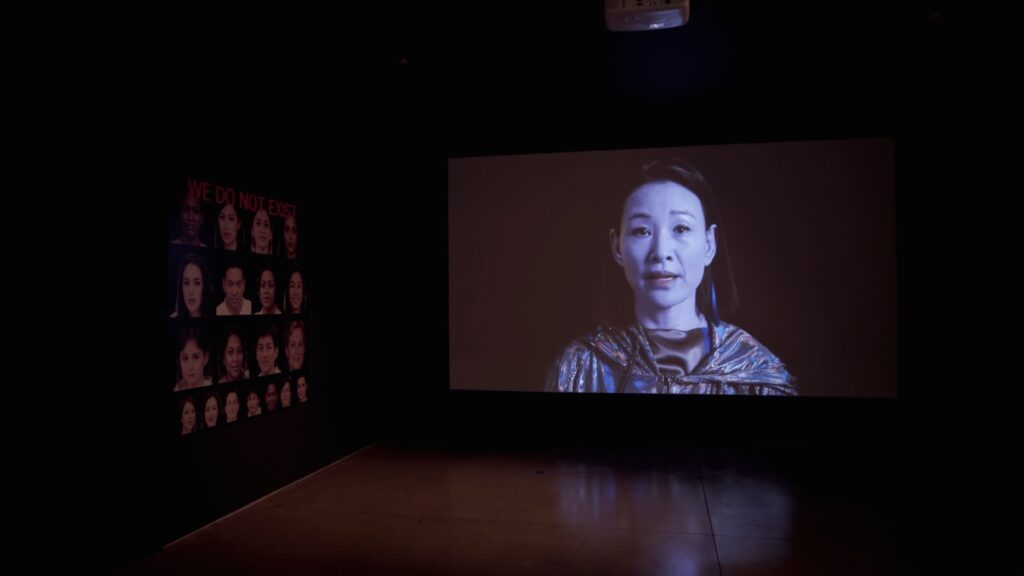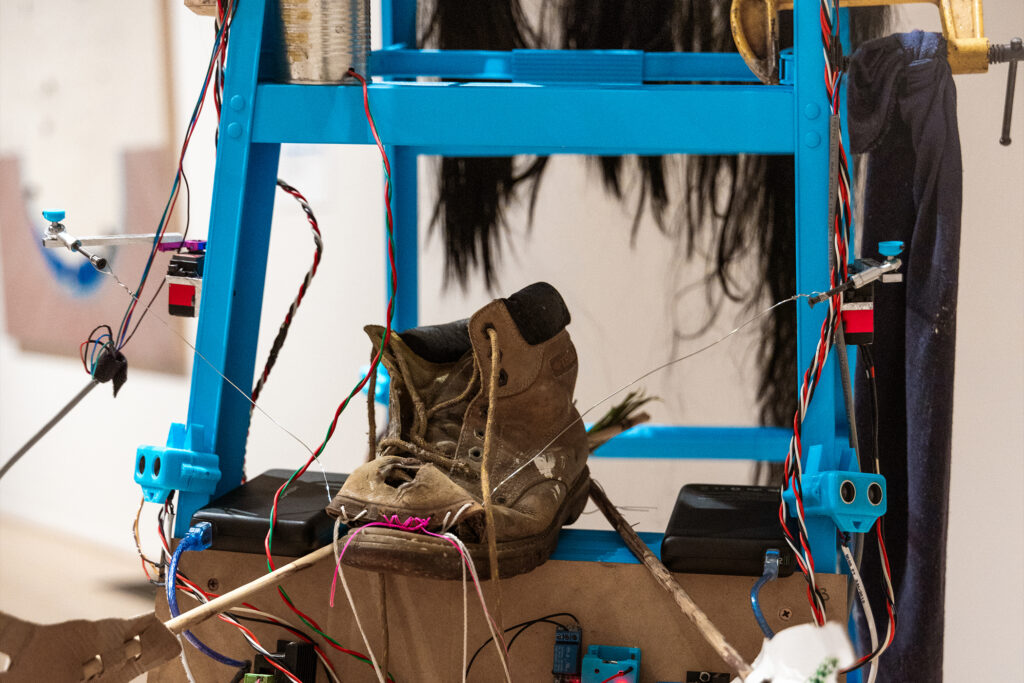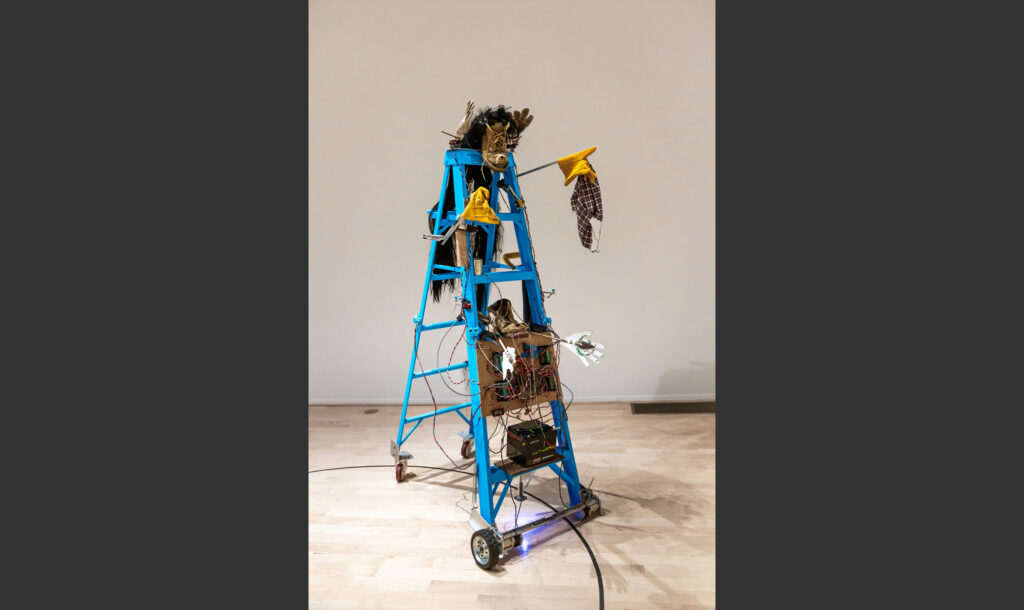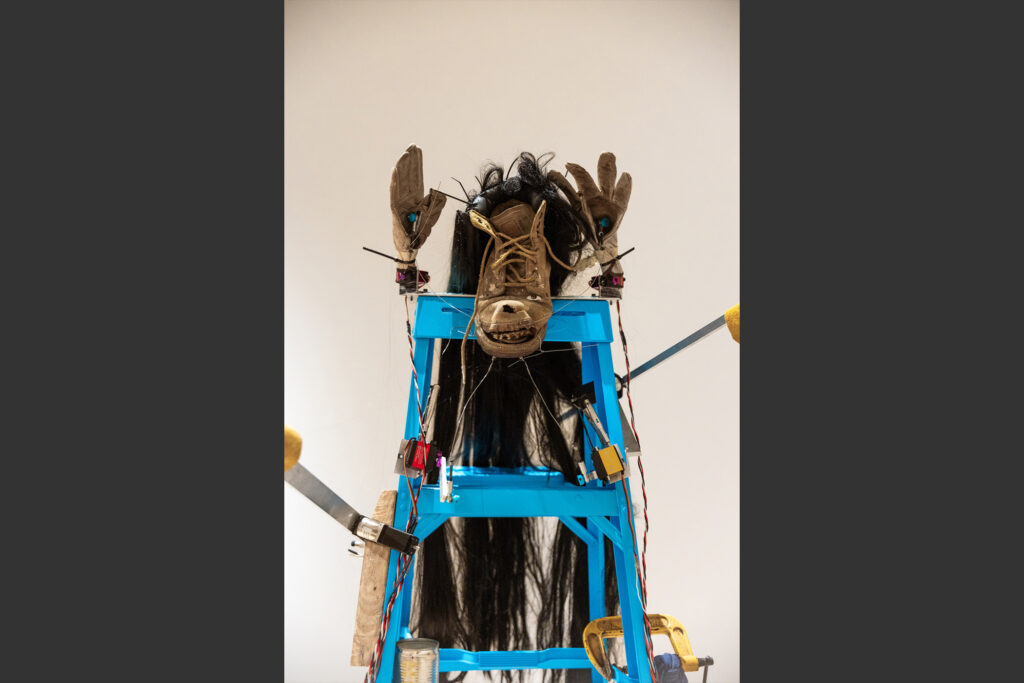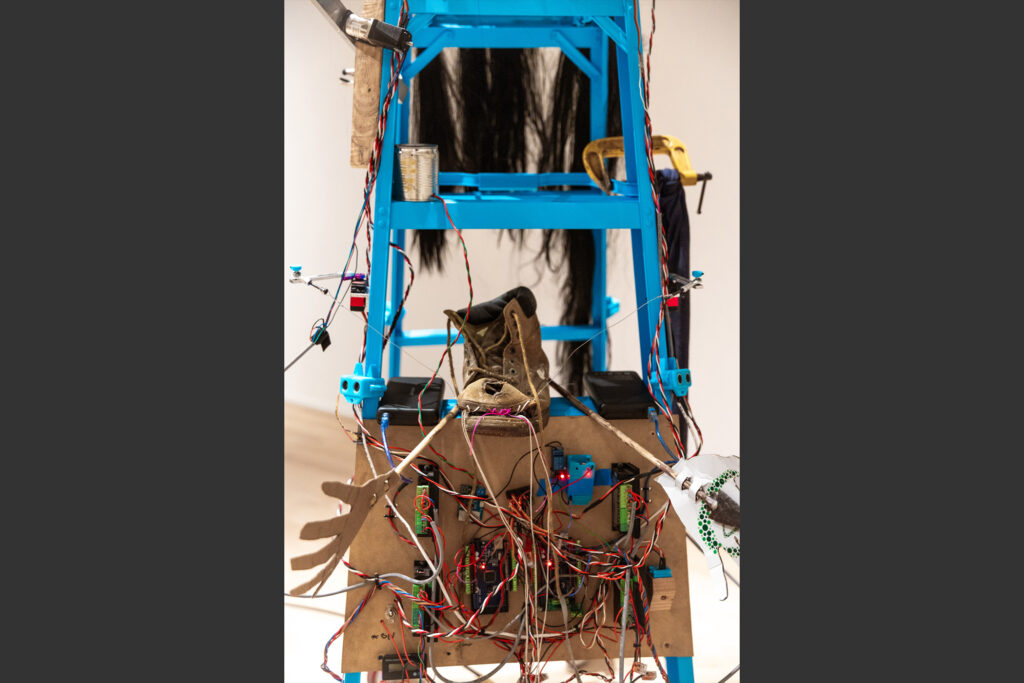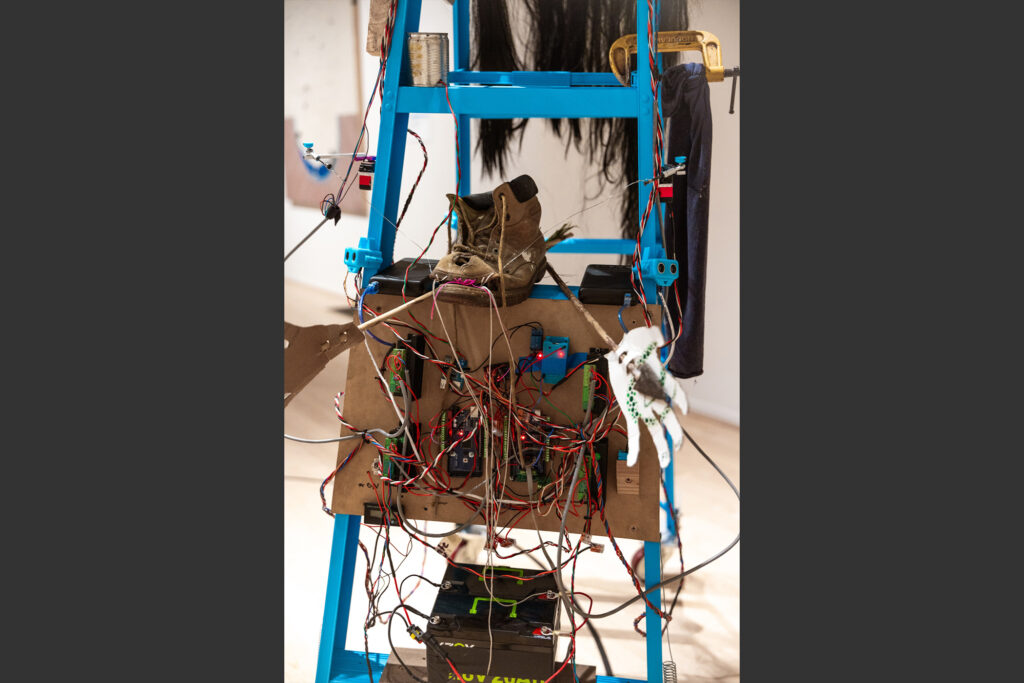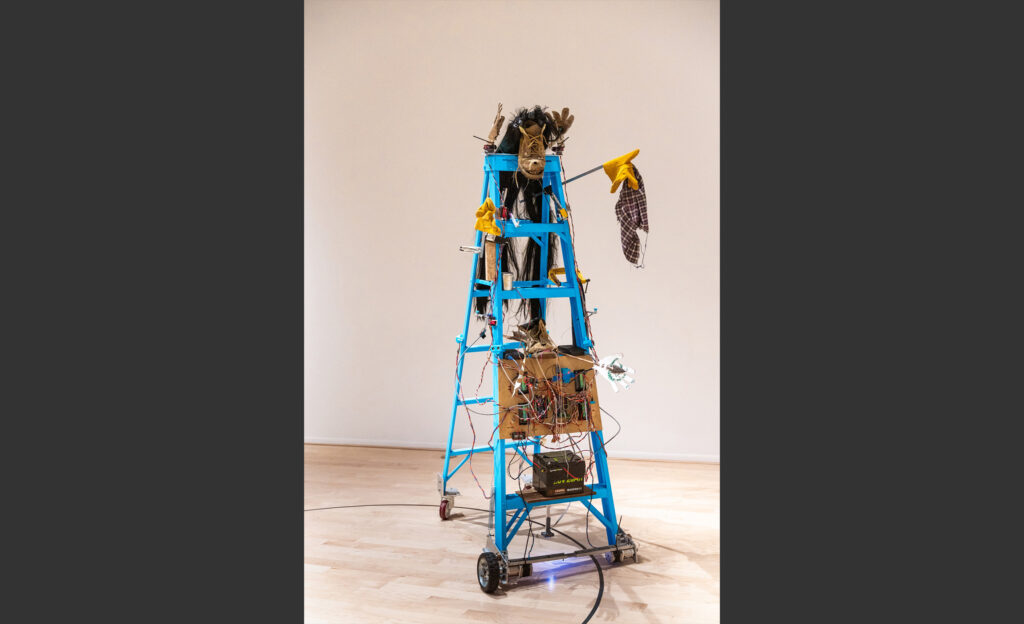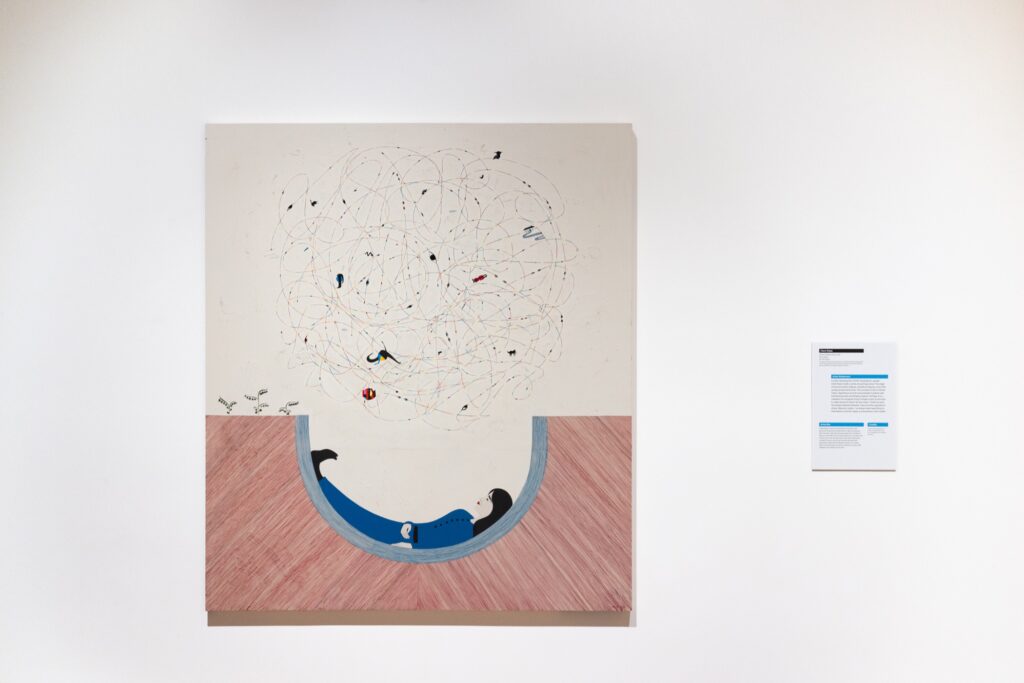Being hyphaenated (Ser hifanizado), 2024
Mycelial networks, living organisms, wood growth rings, glass vessels, soil, water, bio-sensors, custom electronics, lights, iron supports, and visualized AI on monitor, 50 x 53 x 49 inches
Being hyphaenated (Ser hifanizado) is an artwork-as-ecosystem that performs complex interactions between the planet’s living beings. “Hyphae” references themycelial filaments that fungi use to communicate. The sculpture has pods that host microorganisms which are connected to each other through respiration and are mediated by sensing technology. A vessel of water generates humidity in response to the CO2 produced by fungi and by viewers, triggering changes in bioelectric signaling within each pod. Embedded lights pulse in response to these changes, while an artificial intelligence studies bioelectric signals from each organism, looking for emergent behavioral patterns.
→ Behind the Science
Being hyphaenated (Ser hifanizado) investigates ecological relationships at different scales—as interspecies exchanges and as part of planetary respiration. The artwork was produced in conversation with Kathleen Treseder and researchers at the UC Irvine Treseder Lab, which studies fungi’s role in ecosystems and global change. Live specimens included in the artwork were sourced from the mountain ecology surrounding Escondido, California. The project asks, if our technology were modeled from nature, might we begin to think of ourselves as nodes within a community of organisms?
“The whole planet is connected, and the behavior of one entity can dramatically affect living beings in other parts of the world. If you spend enough time with the sculpture, you will see on its screen how the CO2 you are breathing is changing the behavior and signaling of the microorganisms.” —Cesar & Lois
Cesar & Lois is an art collective that probes humanity’s relationship to the planet by interweaving technological, biological and social systems. Their practice layers living networks, like mycorrhiza, over human technologies in order to challenge anthropocentric thinking and move the future of technology towards embodied planetary (and plant) intelligence. Cesar & Lois’s artworks often propose artificial intelligences based on those living networks, imagining machines that learn from Earth’s ecosystems. Formed in 2017 by Lucy HG Solomon (California, US) and Cesar Baio (São Paulo, Brazil), the collective has received numerous international awards for innovations in media art, BioArt, and the usage of AI.
Being hyphaenated (Ser hifanizado) was made possible with support from the UC Irvine Beall Center for Art + Technology, The Beall Family Foundation, and Getty. Institutional backing includes additional support from California State University San Marcos, UNICAMP, and FAPESP (2023/10966-1). The Treseder Lab at UC Irvine supported the project materially and through research contributions.
